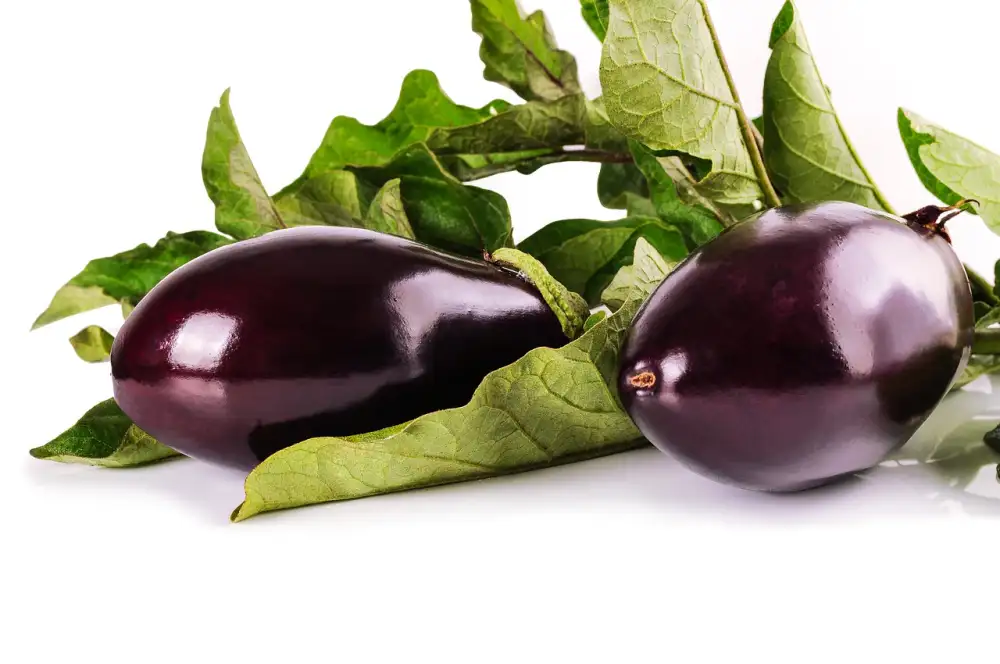Master the Art of Cooking Aubergine: Step-by-Step Guide for Delicious Results

Aubergine, also known as eggplant in some regions, is a versatile vegetable that plays a prominent role in various cuisines worldwide. With its deep purple skin and creamy flesh, aubergine adds a unique flavor and texture to dishes. It is rich in antioxidants, vitamins, and minerals, making it a healthy addition to any meal. Whether grilled, roasted, or fried, aubergine can be transformed into delicious dishes that cater to different tastes and preferences. Let's delve into the world of cooking with this vibrant vegetable and unlock its culinary potential.
Selecting the Perfect Aubergine:
Selecting the perfect aubergine is essential for achieving delicious results in your cooking endeavors. When choosing an aubergine, opt for ones with firm, glossy skin that are free of blemishes. The ideal aubergine should feel heavy for its size, indicating freshness. Medium-sized aubergines are recommended as they offer the best balance of taste and texture. By selecting high-quality aubergines, you set yourself up for culinary success in your dishes.
Preparing the Aubergine:
To start preparing the aubergine, begin by washing it under running water to remove any dirt or residue. Once clean, pat the aubergine dry with a paper towel. Next, trim off the stem using a sharp knife. Depending on your recipe, slice the aubergine as desired – whether into rounds for grilling, cubes for stews, or strips for stir-fries. Properly preparing the aubergine ensures that it cooks evenly and delivers optimal flavor and texture in your dishes.
g., rounds, cubes, or strips).
Preparing the Aubergine:
To prepare the aubergine, start by washing it under running water to remove any dirt or residue. Pat it dry with a clean kitchen towel. Next, trim off the stem using a sharp knife. Depending on your recipe, you can slice the aubergine into rounds for dishes like moussaka, cubes for stir-fries, or strips for grilling. The way you cut the aubergine will affect its texture and how it absorbs flavors during cooking.
Removing Bitterness (Optional):
To remove bitterness from aubergine, sprinkle salt over sliced pieces and let them sit for about 30 minutes. The salt draws out excess moisture containing bitter compounds. Afterward, rinse the aubergine under cold water to remove the salt and any bitterness. This step is optional but can help enhance the overall flavor of your dish by reducing any potential bitterness in the aubergine.
Cooking Methods:
When it comes to cooking aubergine, there are several methods to choose from depending on your preference. One popular method is roasting: simply drizzle sliced aubergine with olive oil, season with salt and pepper, and roast in the oven until tender. Grilling is another delicious option - brush aubergine slices with oil and grill until charred and cooked through for a smoky flavor. For those who enjoy a crispy texture, frying is a great choice. Coat aubergine slices in batter or breadcrumbs and fry until golden brown for a satisfying crunch. Each method brings out different flavors and textures in the versatile vegetable, allowing you to experiment and find your favorite way to enjoy this delicious ingredient.
Incorporating Aubergine in Dishes:
Aubergine, also known as eggplant, is a versatile vegetable that can be incorporated into various dishes to add depth and flavor. Here are some popular ways to enjoy this nutritious ingredient:
1. Ratatouille: A classic French dish that combines aubergine with tomatoes, zucchini, bell peppers, and onions. The vegetables are stewed together with herbs like thyme and basil for a comforting and flavorful meal.
2. Baba Ghanoush: A Middle Eastern dip made by roasting aubergine until soft, then blending it with tahini, garlic, lemon juice, and olive oil. This creamy dip is perfect served with pita bread or as a side dish.
3. Moussaka: A traditional Greek casserole featuring layers of sliced aubergine, minced meat (often lamb or beef), tomatoes, onions, and a rich béchamel sauce. Baked to perfection, moussaka is hearty and satisfying.
These dishes showcase the versatility of aubergine in different cuisines and highlight its ability to absorb flavors while adding its unique texture. Experimenting with these recipes will surely elevate your culinary skills and introduce you to new flavors from around the world.
Serving and Enjoying:
To elevate your aubergine dishes, consider garnishing them with fresh herbs like parsley or basil, a sprinkle of lemon zest for brightness, or a drizzle of balsamic glaze for added depth of flavor. These simple touches can enhance the overall taste experience. Pair your cooked aubergine with crusty bread to soak up any delicious sauces, or serve it alongside fluffy rice or couscous for a satisfying meal that will leave you feeling nourished and content. Experiment with different combinations to find your favorite way to savor the flavors of this versatile vegetable.
**Conclusion:**
In conclusion, aubergine is a versatile vegetable that can elevate any dish with its rich flavor and meaty texture. From Mediterranean to Asian cuisines, aubergine shines in various recipes like ratatouille, baba ghanoush, and moussaka. By mastering the art of cooking aubergine through roasting, grilling, or frying, you can unlock its full potential in your culinary creations. Don't be afraid to experiment with different flavors and techniques to truly savor the unique taste of this remarkable vegetable. So go ahead, grab an aubergine, and embark on a delicious journey filled with culinary adventures!
Published: 02. 05. 2024
Category: Food



